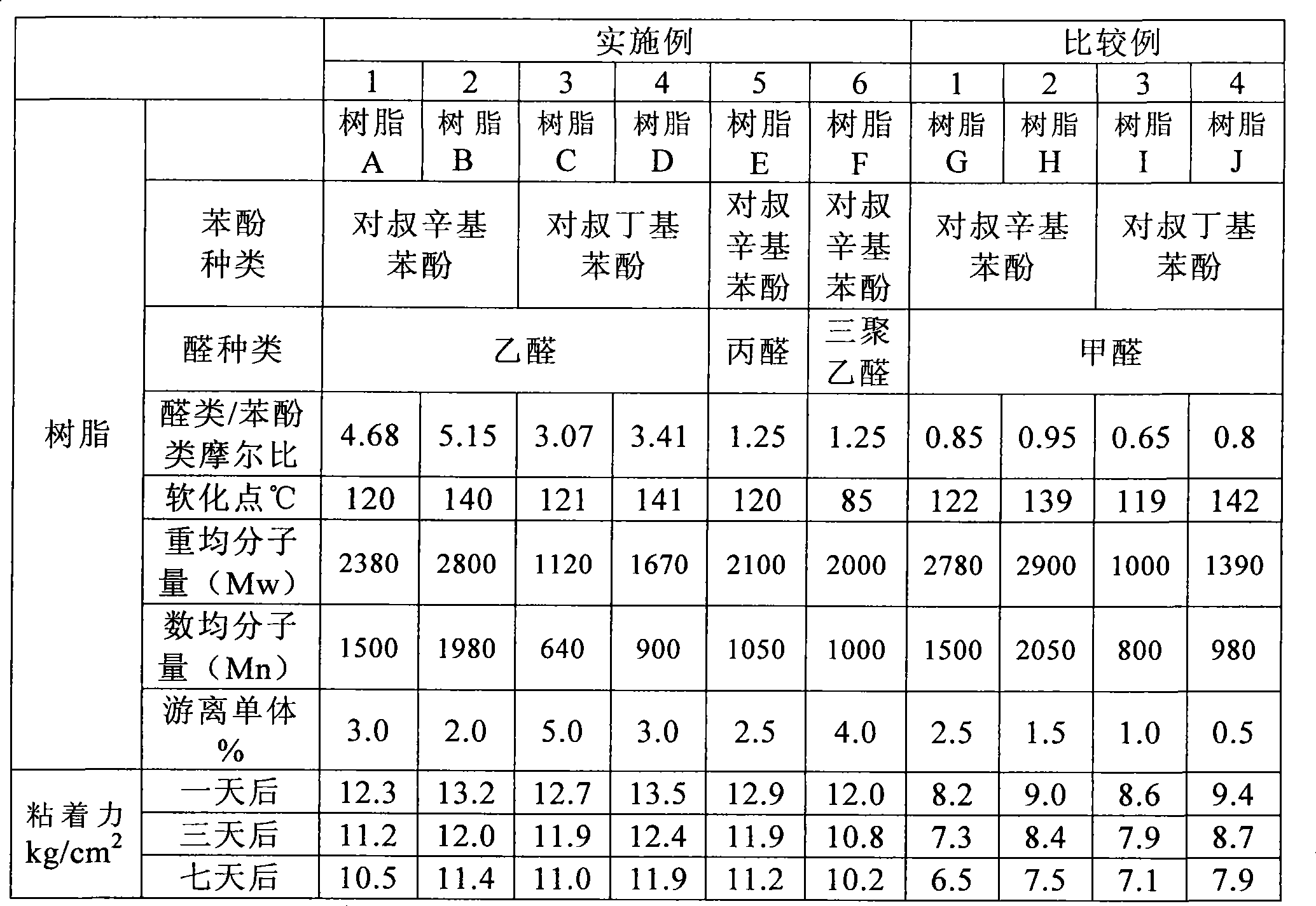Resin for blending with rubber, and rubber composition
A rubber composition and rubber technology, applied in the field of rubber compounding resin and rubber composition, can solve problems such as insufficient rubber adhesion, and achieve high adhesion effect
- Summary
- Abstract
- Description
- Claims
- Application Information
AI Technical Summary
Problems solved by technology
Method used
Image
Examples
Embodiment 1
[0044] In a reactor with a stirring device, a reflux condenser and a thermometer, 1000 parts of p-tert-octylphenol, 1000 parts of acetaldehyde and 10 parts of p-toluenesulfonic acid were put into the reaction vessel under reflux for 3 hours. Next, dehydration and de-p-tert-octylphenol were carried out under reduced pressure until the amount of moisture and free monomer reached a predetermined level, and then it was taken out from the reactor to obtain resin A for rubber compounding. The softening point of this resin A was 120° C., and the free p-tert-octylphenol content was 3.0%.
Embodiment 2
[0046] In a reactor with a stirring device, a reflux condenser and a thermometer, 1000 parts of p-tert-octylphenol, 1100 parts of acetaldehyde and 10 parts of p-toluenesulfonic acid were put into the reaction vessel for 3 hours under reflux. Next, dehydration and de-p-tert-octylphenol were carried out under reduced pressure until the predetermined amount of water and free monomers was reached, and then it was taken out from the reactor to obtain resin B for rubber compounding. The softening point of this resin B was 140° C., and the free p-tert-octylphenol content was 2.0%.
Embodiment 3
[0048] In a reactor with a stirring device, a reflux condenser and a thermometer, 1000 parts of p-tert-butylphenol, 900 parts of acetaldehyde and 10 parts of p-toluenesulfonic acid were put in, and reacted under reflux for 3 hours. Next, dehydration and removal of p-tert-butylphenol were carried out under reduced pressure until the predetermined amount of moisture and free monomers was reached, and then it was taken out from the reactor to obtain resin C for rubber compounding. The softening point of this resin C was 121° C., and the amount of free p-tert-butylphenol was 5.0%.
PUM
| Property | Measurement | Unit |
|---|---|---|
| softening point | aaaaa | aaaaa |
| softening point | aaaaa | aaaaa |
| softening point | aaaaa | aaaaa |
Abstract
Description
Claims
Application Information
 Login to View More
Login to View More - R&D
- Intellectual Property
- Life Sciences
- Materials
- Tech Scout
- Unparalleled Data Quality
- Higher Quality Content
- 60% Fewer Hallucinations
Browse by: Latest US Patents, China's latest patents, Technical Efficacy Thesaurus, Application Domain, Technology Topic, Popular Technical Reports.
© 2025 PatSnap. All rights reserved.Legal|Privacy policy|Modern Slavery Act Transparency Statement|Sitemap|About US| Contact US: help@patsnap.com

